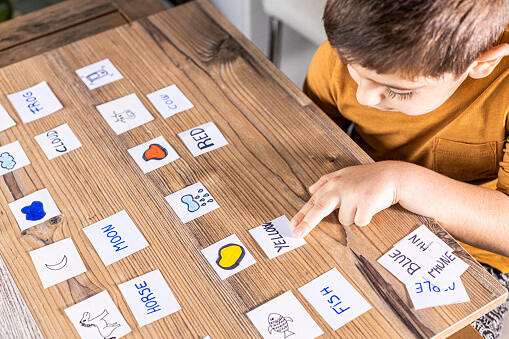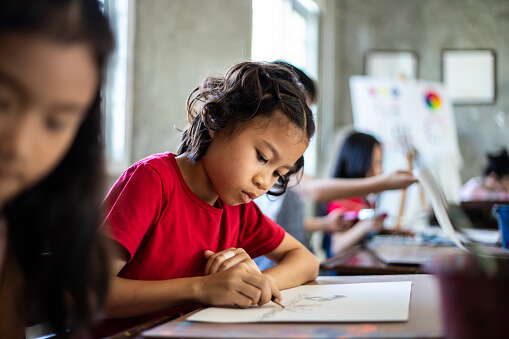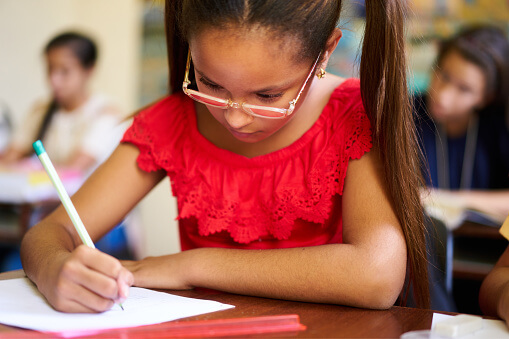
Continua of Cultural Tendencies and Beliefs
Table illustrating cultural tendencies and beliefs that may influence a student’s learning.
Differences in culture or language can lead to misperceptions and communication gaps among students and between students and teachers. As a result, lack of preparation in teachers can limit their ability to provide culturally, linguistically, and economically diverse (CLED) gifted students effective instruction that will benefit their academic success. Schools serving CLED gifted students must adopt culturally responsive teaching approaches in addition to the gifted curriculum within the school. According to Gay (2002), “Culturally responsive teaching connects students’ cultural knowledge, prior experiences, and performance styles to academic knowledge and intellectual tools in ways that legitimize what students already know.”
CLED students may not have had experiences and exposure to stimulating cognitive activities that help build the language structure necessary for later academic success. Classroom studies and educator interviews indicate that students make greater improvement in reading comprehension when teachers combine instructional engagement approaches with students’ cultural and linguistic knowledge. The curriculum and classroom environment should “honor and reflect the lives of the students” (Kaplan 2019).
Other characteristics of culturally responsive teaching include the following:
Carol Ann Tomlinson developed The Equalizer to assist teachers in differentiation content, process, and/or product for students. By sliding a lever on any number of continuums, anything can be differentiated based on students' readiness, interest or learning profile. In their book Differentiation and the Brain: How Neuroscience Supports the Learner-Friendly Classroom (2nd edition), Sousa and Tomlinson recreate a table illustrating cultural tendencies and beliefs that may influence a student’s learning. Just like the Equalizer, any one of these levers may slide in one direction or the other to modify instruction or activities based on a student’s cultural background.
Dr. Donna Ford has created a gifted cultural education model based on Bloom’s Taxonomy and James Banks’ levels of integrating multicultural content; contributions, additive; transformation, and social action.

Table illustrating cultural tendencies and beliefs that may influence a student’s learning.

Dr. Donna Ford has created a gifted cultural education model based on Bloom’s Taxonomy and James Banks’ levels of integrating multicultural content; contributions, additive; transformation, and social action. Dr. Ford’s matrix contains multiple pathways in which educators can develop curriculum that will affect students culturally and cognitively. The rows contain components of James Banks' Levels of Integration whereas the columns contain Bloom’s Taxonomy.

James Banks' article on the levels of integrating multicultural content; contributions, additive; transformation, and social action.
Culturally responsive instructional scaffolding involves teacher assistance with difficult tasks or use of cultural and linguistic backgrounds in order to promote high-level learning. These strategies should also be employed for culturally, linguistically, and economically diverse (CLED) gifted students as part of gifted services. Scaffolding skills involve the following:

A framework to locating gifted English learners by Edutopia author Louise Yaafouri.

A synthesis of research, challenges, and best practices in the education of secondary English Learners (ELs) from UC Davis.
Over the years, research on children from economically disadvantaged backgrounds has shown that these students enter school with a weak literacy foundation, especially in vocabulary, reading, and oral language. Students with high nonverbal intelligence can harness their ability to improve their verbal intelligence by using visualization and verbalization techniques. Click on any of the resources below to read more about this technique.

Through guided visualization, students learn how to create mental pictures as they read.

Guiding students to visualize as they read is an engaging and enjoyable way to boost comprehension and retention.

Resources, ideas, and suggestions to help students get started with drawing to learn.

50 Multicultural Books Every Child Should Know

Authors Ford and Milner provide an overview of multicultural gifted education, effective teaching strategies, and best practices to support a diverse population of students.

TEA resource designed to help teach research skills in addition to tips for differentiating instruction for Gifted/Talented (G/T) learners.

TEA resource designed to help educators evaluate curriculum and determine where to differentiate and add depth and complexity for gifted students.

Ideas to engage high-level thinkers in the classroom.

Book introducing educators to the complexities and challenges of providing appropriate educational experiences for gifted English Learners.

Prufrock Press offers free webinars that brings experts in the field of gifted education to educators.

TEA web portal providing educators with resources that will positively impact efforts to ensure equity and the academic success of English Learners.

TEA designed the TELPAS to assess the progress that English learners make in learning the English language.

TPSP is comprised of performance standards, curricula, and assessments for enhancing G/T programs from kindergarten through high school.